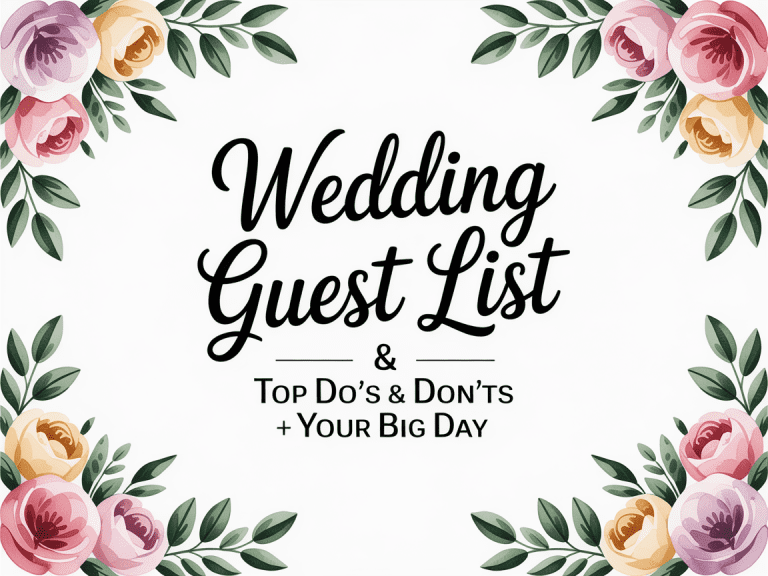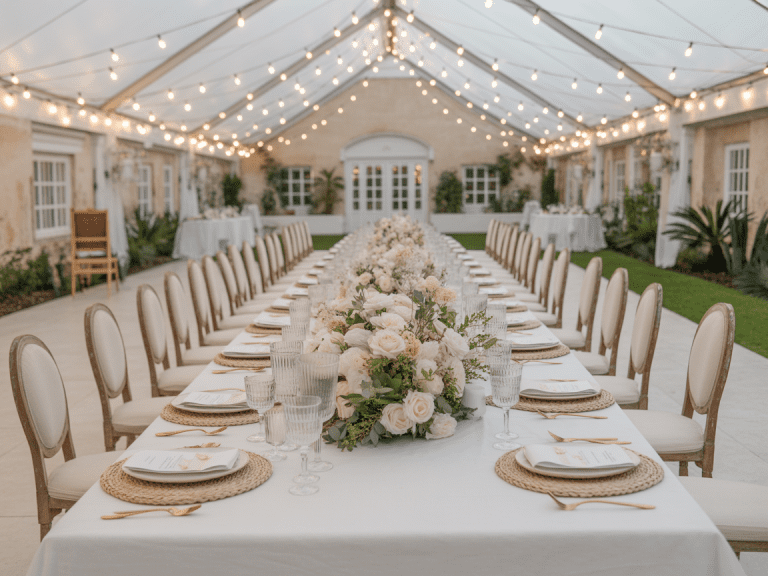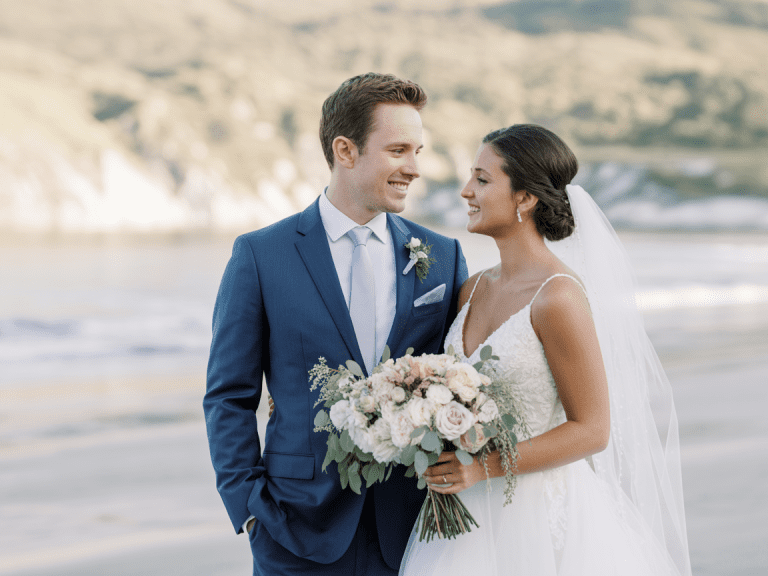Just got engaged? First of all – congratulations! If you’re wondering where to begin your wedding planning journey, you’re in the right place.
Wedding planning doesn’t have to be overwhelming. Start with the right steps, and everything else will begin to fall into place naturally.
With over 500 weddings photographed and countless timelines created, I’ve gathered a decade’s worth of insight into what makes wedding planning successful and stress-free.
Let’s dive into the first four essential steps to take after getting engaged:
Set a Realistic Wedding Budget
Before anything else, get clear on your budget. Knowing how much you can spend sets the tone for every decision going forward.
Here’s a step-by-step breakdown:
- Check your current savings: Write down how much you already have set aside.
- Calculate monthly savings: Figure out how much you and your partner can save per month. The longer your engagement, the more you can build up.
- Ask about contributions: Talk to family early if you’re hoping for financial help. Be clear and respectful about what they’re comfortable covering.
- Total it up: Combine your savings, future savings, and any contributions to calculate your maximum budget.
- Decide what you want to spend: Just because you can spend a certain amount doesn’t mean you have to. Discuss what feels right—maybe you want to save for a house or an epic honeymoon too.
Create Your Wedding Priority List
The best way to keep your planning focused (and fun!) is by knowing what matters most to each of you.
Here’s how:
- Make individual lists: You and your partner should write down your top 3–5 must-haves separately without influence from the other person.
- Compare and discuss: Sit down together and see where you align. Talk about why each item matters to you. It’s a great exercise in understanding and compromise.
- Create a joint priority list: Merge your top priorities and rank them. Use this list as a guide when budgeting and making big decisions.
📝 Example: If amazing food and a live band are top priorities, make sure those areas get the biggest slice of your budget.
Build a Rough Guest List
Once your budget is in place, the next big step is your guest list – it affects your venue, catering, and nearly every planning choice.
- Decide on wedding size: Do you want a large celebration or something more intimate? The guest count is the biggest driver of costs.
- List your must-have guests: Think close family and friends – those you absolutely can’t imagine the day without.
- Expand from there: Add extended family, college friends, coworkers, etc. Don’t forget to set boundaries early (e.g., kids or plus-ones).
- Check in with family: Especially if they’re helping with costs, ask if they have specific people they’d like to invite. Open conversations lead to smoother planning.
💡 Tip: The average cost per guest is around $250. Trimming 25 guests could save you over $6,000.
Set Your Wedding Date and Find the Perfect Venue
Once your budget and guest list are in place, it’s time to make two of the biggest planning decisions: when and where you’ll say “I do.” These choices are deeply connected – your date influences your venue options, and your venue may determine which dates are even available. Let’s walk through it step by step.
1. Decide on Your Wedding Location
Before you fall in love with a specific venue, think bigger:
- Where do you want to get married? Will it be a hometown wedding, a destination celebration, or something in between?
- Think of your guests. Is it easier for most people to travel to a central location, or are you hoping they’ll make a vacation out of it?
💡 Pro-Tip: Choose a location that feels meaningful. Maybe it’s the city where you met, your favorite vacation spot, or the place where your love story began.
2. Pick a Wedding Date
Now that you have a location in mind, it’s time to lock in the “when.”
- Season matters. Dreaming of an outdoor ceremony? Then avoid the hottest or coldest times of year based on your comfort.
- Talk to key people. Before finalizing anything, check in with close family or VIP guests to avoid scheduling conflicts.
- Be flexible. Off-season dates, Fridays, or Sundays can often save you thousands – especially with popular venues.
- Check your calendar. Consider your own work schedule and avoid peak stress times so you can actually enjoy the lead-up to your big day.
3. Start Your Venue Search
With a rough date and location in hand, the venue hunt can officially begin!
- Create your vision. Do you see yourself celebrating in a rustic barn, a romantic garden, or a chic city loft?
- Contact early. Ask about availability, capacity, and pricing before booking a tour – this saves you time and energy.
- Stay true to your priorities. If having a mountain backdrop or beachfront view is non-negotiable, filter venues accordingly.
🎯 Bonus Insight: Your guest list and budget will naturally narrow down your venue choices—use them as a compass, not a constraint. Planning your date and venue together ensures everything aligns with your vision, your lifestyle, and your wallet.
Final Thought
These first steps will set the foundation for a smooth, exciting, and meaningful wedding planning experience. Focus on what matters most to you, stay flexible, and remember: this journey should be joyful—not stressful.
You’ve got this!









